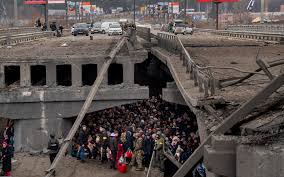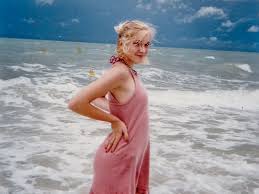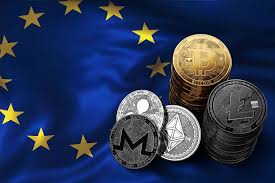What appeared to be a breakthrough cease-fire to evacuate residents from two Ukrainian cities quickly unraveled on Saturday, when Ukrainian officials said the work to evacuate civilians had come to a halt amid shelling hours after Russia announced the agreement?
The Russian defense ministry had previously stated that it had reached an agreement with Ukrainian forces on evacuation routes for Mariupol, a strategic port in the southeast, and Volnovakha, a city in the east. The ambiguous statement did not specify how long the routes would be open.
“The Russian side is not holding to the cease-fire and has continued firing on Mariupol itself and on its surrounding area,” said Kyrylo Tymoshenko, the deputy head of President Volodymyr Zelenskyy’s office. “Discussions with the Russian Federation about establishing a cease-fire and ensuring a safe humanitarian corridor are ongoing.”
Russia also broke the agreement in Volnovakha, according to Deputy Prime Minister Iryna Vereshchuk. She said, “We appeal to the Russian side to stop firing.” Meanwhile, Russian outlet RIA Novosti carried a Russian defense ministry claim that the firing came from inside both communities against Russian positions.
The struggle to enforce the cease-fire revealed the frailty of efforts to end the fighting across Ukraine, as tens of thousands of people continued to flee the country.
“We’re doing everything we can to make the agreement work,” said Zelensky. “This is one of today’s most important tasks. Let’s see how far we can get with the negotiations.”
After days of bombardment that knocked out power and most phone service, and raised the danger of food and water shortages for hundreds of thousands of people in the frigid weather, Mariupol had become a sight of escalating agony. According to Doctors without Borders, pharmacies are out of medicine.
The evacuations would begin at 11 a.m. (9 a.m. GMT), according to a top official in Mariupol, and the cease-fire would extend until 4 p.m. (2 p.m. GMT). The humanitarian corridor would run to Zaporizhzhia, 226 kilometers (140 miles) distant, according to Pavlo Kirilenko, chairman of the Donetsk military-civil administration, which covers the city.
Oleksiy Danilov, the head of Ukraine’s Security Council, had urged Russia to build humanitarian corridors to allow children, women, and the elderly to flee the fighting, referring to them as “question No. 1.”
US Secretary of State Antony Blinken arrived in Poland to meet with the prime minister and foreign minister, a day after attending a NATO meeting in Brussels where the alliance pledged to increase support for eastern flank members. Later in the day, Blinken would go to a border checkpoint to meet refugees.
While Russian forces pound vital targets abroad, Ukrainian President Volodymyr Zelensky has slammed NATO for refusing to establish a no-fly zone over his nation, threatening that “all the people who die from this day forward will perish because of you.”
A no-fly zone, according to NATO, may lead to widespread war in Europe with a nuclear-armed Russia. However, as the US and other NATO members send weapons to Kyiv and over 1 million refugees flood the continent, the conflict is engulfing countries far beyond Ukraine’s borders.
Russia continues to stifle independent media coverage of the war, blocking Facebook and Twitter in the process, and more outlets are halting operations inside the nation.
The United Nations World Food Program has warned that millions of people inside Ukraine, a major global wheat supplier, will require food aid “immediately.”
The president of Ukraine was scheduled to brief US senators via video conference on Saturday as Congress considers a request for $10 billion in emergency funding for humanitarian and security needs.
Late Friday, Zelensky delivered a vehement and emotional speech criticizing NATO for the lack of a no-fly zone, warning that “Europe’s history will remember this forever.”
All unauthorized aircraft would be barred from flying over Ukraine under a no-fly zone.
That possibility had been ruled out by NATO Secretary-General Jens Stoltenberg. “The only way to impose a no-fly zone is for NATO fighter planes to fly into Ukrainian airspace and shoot down Russian planes,” he said.
Zelensky pleaded for assistance in a separate video message to anti-war protesters in several European towns. He responded, “If we fall, you will fall.”
On Monday, the United Nations Security Council will hold an open meeting to discuss the deteriorating humanitarian situation. According to the United Nations, 12 million people in Ukraine and 4 million people fleeing to neighboring countries will require humanitarian assistance in the coming months.
Russian forces did not make significant progress in their offensive to sever Ukraine’s access to the Black Sea and the Sea of Azov, which would deal a severe blow to the country’s economy, but their attack on Ukraine’s largest nuclear power plant in Zaporizhzhia on Friday caused global alarm.
Despite the fact that a massive Russian armored column threatening Ukraine’s capital remained stalled outside Kyiv, Russia’s military has launched hundreds of missile and artillery attacks on cities and other targets across the country.
One resident accused Europe of simply looking on as homes in the northern city of Chernihiv burned due to what locals described as Russian shelling. “We wanted to join NATO and the EU, and this is the price we have to pay, and NATO is unable to protect us.” She said.
According to the United Nations Human Rights Office, at least 331 civilians have been confirmed killed since the fighting began, but the true number is likely much higher.
The central train station in Kyiv remained packed with people hoping to join the over 1.4 million people who have fled Ukraine. “People just want to live,” said Ksenia, one of the women.

















